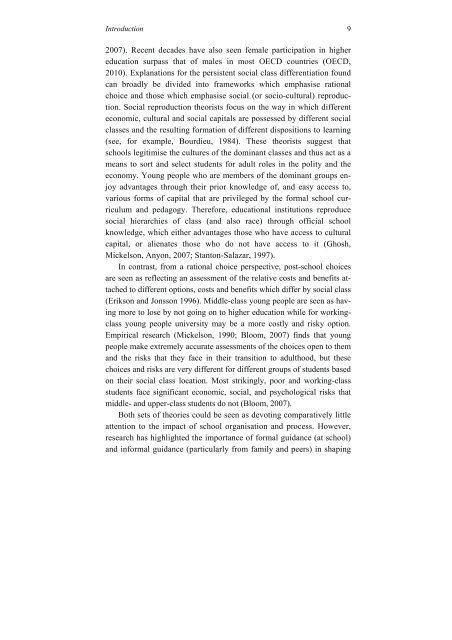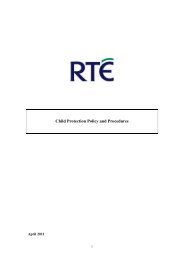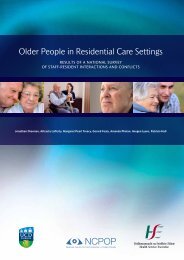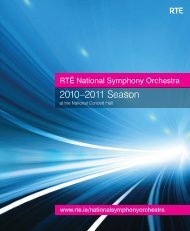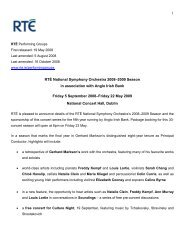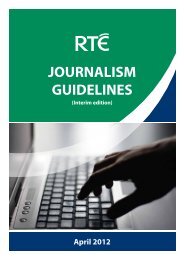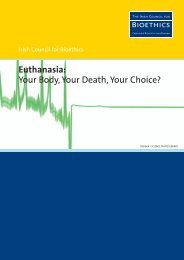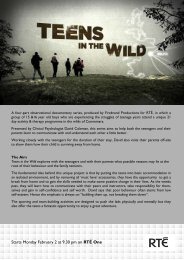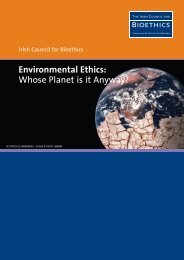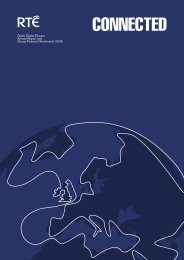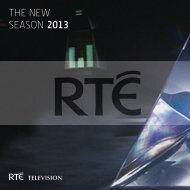From Leaving CertiFiCate to Leaving SChooL a Longitudinal Study ...
From Leaving CertiFiCate to Leaving SChooL a Longitudinal Study ...
From Leaving CertiFiCate to Leaving SChooL a Longitudinal Study ...
You also want an ePaper? Increase the reach of your titles
YUMPU automatically turns print PDFs into web optimized ePapers that Google loves.
Introduction 9<br />
2007). Recent decades have also seen female participation in higher<br />
education surpass that of males in most OECD countries (OECD,<br />
2010). Explanations for the persistent social class differentiation found<br />
can broadly be divided in<strong>to</strong> frameworks which emphasise rational<br />
choice and those which emphasise social (or socio-cultural) reproduction.<br />
Social reproduction theorists focus on the way in which different<br />
economic, cultural and social capitals are possessed by different social<br />
classes and the resulting formation of different dispositions <strong>to</strong> learning<br />
(see, for example, Bourdieu, 1984). These theorists suggest that<br />
schools legitimise the cultures of the dominant classes and thus act as a<br />
means <strong>to</strong> sort and select students for adult roles in the polity and the<br />
economy. Young people who are members of the dominant groups enjoy<br />
advantages through their prior knowledge of, and easy access <strong>to</strong>,<br />
various forms of capital that are privileged by the formal school curriculum<br />
and pedagogy. Therefore, educational institutions reproduce<br />
social hierarchies of class (and also race) through official school<br />
knowledge, which either advantages those who have access <strong>to</strong> cultural<br />
capital, or alienates those who do not have access <strong>to</strong> it (Ghosh,<br />
Mickelson, Anyon, 2007; Stan<strong>to</strong>n-Salazar, 1997).<br />
In contrast, from a rational choice perspective, post-school choices<br />
are seen as reflecting an assessment of the relative costs and benefits attached<br />
<strong>to</strong> different options, costs and benefits which differ by social class<br />
(Erikson and Jonsson 1996). Middle-class young people are seen as having<br />
more <strong>to</strong> lose by not going on <strong>to</strong> higher education while for workingclass<br />
young people university may be a more costly and risky option.<br />
Empirical research (Mickelson, 1990; Bloom, 2007) finds that young<br />
people make extremely accurate assessments of the choices open <strong>to</strong> them<br />
and the risks that they face in their transition <strong>to</strong> adulthood, but these<br />
choices and risks are very different for different groups of students based<br />
on their social class location. Most strikingly, poor and working-class<br />
students face significant economic, social, and psychological risks that<br />
middle- and upper-class students do not (Bloom, 2007).<br />
Both sets of theories could be seen as devoting comparatively little<br />
attention <strong>to</strong> the impact of school organisation and process. However,<br />
research has highlighted the importance of formal guidance (at school)<br />
and informal guidance (particularly from family and peers) in shaping


